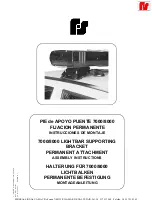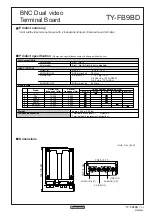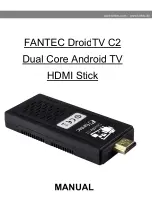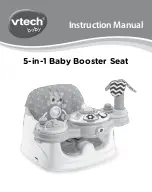
Specifications
Type
Double-junction, sealed, gel-filled, polycarbonate body,
Ag/AgCl
Response time
90% of final reading in 1 second in a buffer
Temperature range
5 to 80°C (readings not compensated)
Range
pH 0–14
Accuracy
± 0.2 pH units
Isopotential pH
pH 7 (point at which temperature has no effect)
Default calibration
values
slope: –7.78
intercept: 16.34
Shaft diameter
12 mm OD
Membrane style
Flat glass
Cable
1 meter coaxial cable with BNC connector
Care and Maintenance
Short-term storage (up to 24 hours):
Place the electrode in pH 4 or pH 7 buffer
solution. It should never be stored in distilled water.
Long-term storage (more than 24 hours):
Store the electrode in a pH 4
buffer/KCl storage solution in the storage bottle. The pH electrode is shipped in
this solution. Vernier sells 500 mL bottles of pH Storage Solution
(order code PH-SS), or you can prepare additional storage solution by adding 10 g
of solid potassium chloride (KCl) to 100 mL of pH 4 buffer solution. Vernier sells
a pH Buffer Capsule kit (PH-BUFCAP) that includes a buffer solution preservative.
Storing the electrode in this solution contributes to electrode longevity and retains
electrode response time when the unit is placed back into service.
If the electrode is inadvertently stored dry for a short period of time, immerse the
tip in the pH 4 buffer/KCl storage solution for a minimum of 8 hours prior to use.
If the readings are still not accurate after calibration or if the response is slow, try
shocking the sensor as described in the Troubleshooting section.
How the Sensor Works
The Tris-Compatible Flat pH Sensor is a sealed, gel-filled, double-junction
pH Electrode attached via BNC to our Electrode Amplifier. The double-junction
pH Electrode prevents silver from the Ag/AgCl gel from coming in contact with
the sample. Tris buffers (tris(hydroxymethyl)aminomethane) and solutions with
proteins and sulfides will react with silver to clog the reference junction,
shortening the life of single-junction electrodes.
The measurement electrode is made of flat glass, making it more durable and easier
to clean than a traditional glass bulb. In addition to liquids, it is ideal for
measuring the pH of semisolids such as many foods and soil slurries. It also allows
for flat surface measurements and the use of smaller sample sizes.
3
The Electrode Amplifier that is included with the sensor amplifies the electrode’s
mV reading into the appropriate range for the interface. It also provides the
software with the calibration values that convert the voltage into a pH value.
Troubleshooting
When testing a Tris-Compatible Flat pH Sensor, it is best to measure a buffer
solution because it is easier to determine if the sensor is reading correctly. Do not
test your sensor by measuring distilled water. Distilled water can have a pH
reading in the range of 5.5–7.0, due to varying amounts of dissolved carbon
dioxide. Furthermore, due to a lack of ions, the pH values reported with the sensor
in distilled water will be erratic.
If your Tris-Compatible Flat pH Sensor is reading differently from the pH of a
buffer solution (e.g., reads 6.7 in a buffer 7), you may simply need to calibrate the
sensor. See the Calibration section for more information.
If your readings are off by several pH values, the pH readings do not change when
moved from one buffer solution to a buffer solution of different pH, the sensor was
stored dry for an extended period of time, or the sensor’s response seems slow, the
problem may be more serious. A method called “shocking” can be used to revive
pH electrodes. To shock your pH Sensor, perform the following:
1. Soak the pH Electrode for 4–8 hours in an HCl solution of 0.1 M–0.5 M.
2. Rinse off the electrode and soak the tip in freshly prepared long-term storage
solution (recipe above) for 30–60 minutes.
3. Rinse the electrode and test it with buffer solutions of known pH.
Occasionally, mold will grow in the pH 4 buffer/storage solution. Mold will not
harm the electrode and can easily be removed using a mild detergent solution.
Mold growth in the storage solution can be inhibited by adding a buffer
preservative.
For additional troubleshooting and FAQs, see
www.vernier.com/til/1361
Repair Information
If you have followed the troubleshooting steps and are still having trouble with
your Tris-Compatible Flat pH Sensor, contact Vernier Technical Support at
[email protected] or call 888-837-6437. Support specialists will work with you
to determine if the unit needs to be sent in for repair. At that time, a Return
Merchandise Authorization (RMA) number will be issued and instructions will be
communicated on how to return the unit for repair.
Accessories/Replacements
Item
Order Code
pH Storage Solution, 500 mL
PH-SS
pH Buffer Capsules (3×10) Kit
PH-BUFCAP
Storage Solution Bottles, pkg of 5
BTL
4





















